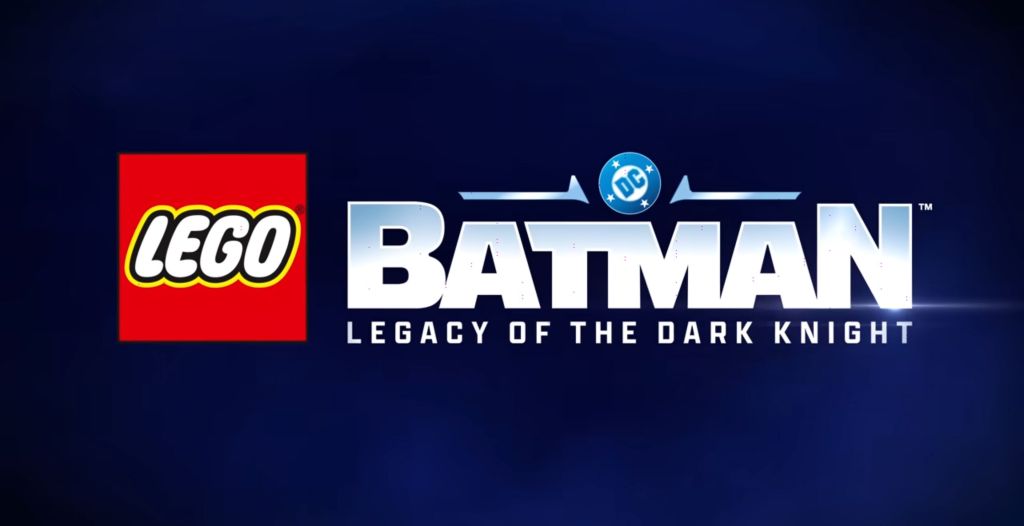At his first day on the job as sheriff of the Cook County Jail in Chicago, Tom Dart noticed something was deeply wrong.
“I’m shutting down a division, and the next moment, I’m seeing mentally ill people with no beds,” he told VICE. “And I’m like, ‘OK, what’s going on here? Did I miss out on a memo that I’m also in charge of the local mental health hospital, too? I thought I was just in charge of the jail.’”
Videos by VICE
With roughly 8,000 inmates, Cook County is America’s largest local jail, and about 35 percent of that population has some sort of mental illness—making it perhaps the country’s largest mental health institution. The fact that the two are now virtually symbiotic speaks to the fact that a mentally ill person is now ten times more likely to be behind bars than in a hospital bed.
So, over the last decade, Sheriff Dart has tried to accomplish three things: “Keep them from coming here, keep them from coming back, and treat them like humans.” To do that, his administration has put forth a litany of measures like hiring mental health specialists; providing case studies for public defenders; signing up thousands for the Affordable Care Act; creating photography, farming, and transition programs; and establishing a 24/7 hotline for mentally ill former inmates to call, should they need a ride to pick up meds, or find a bed.
“We want to literally change the mindset as if they’re walking into my hospital,” Dart, a former prosecutor, state senator, and representative in Illinois, told me. “What am I gonna do? Diagnose, and then put a course of treatment together.”
Some say the problems of mental illness in modern mass incarceration can be traced back to the Reagan era, when the duty of not only treating but also funding fell increasingly on the states, which often shuttered community mental health hospitals in the face of rising costs. In the future, Dart believes this pattern of underfunding mental health institutions will continue. And with criminal justice reform moving slowly—if at all—in DC, it’s left to local jails like his own, which hold nearly a third of the nation’s inmates, to plot a path forward for mentally troubled members of society.
By reexamining every step of the process—from bail and court hearings, to mental health and the charges themselves—the idea of diversion, or preventing people from ending up behind bars, is being redefined.
Cities and states across the country are experimenting with how to clean up the historically clogged criminal justice system, which sees 1 in 111 Americans, or 2.2 million in total, behind bars on any given day, and leaves 1 in 3 adults with some sort of criminal record. (That’s the same share as those who have college degrees.) By reexamining every step of the process—from bail and court hearings, to mental health and the charges themselves—the concept of diversion, or preventing people from ending up behind bars, is being redefined.
California is one of the best examples. In 2009, a panel of three federal judges ruled that the state’s prisons were dangerously past capacity, a violation of detainees’ Eighth Amendment rights against cruel and unusual punishment—an order that was upheld by the United States Supreme Court in 2011. What followed would later be called “realignment,” or the statewide movement to rethink public safety and sentencing. In an effort to reduce state prison populations, anyone who committed a nonviolent, non-serious, or non-sex-offender-related crime would be sentenced to local jails instead. And since California’s constitution limits what state prisons can do to downsize, counties were given an influx of funds to come up with ways to lower their head counts.
According to Brandon Martin, a research associate at the Public Policy Institute of California who studies corrections, two new techniques arose from this: split sentencing and flash incarceration.
“The judge can sort of decide how much jail time someone gets, and then how much time they’re out, with community supervision,” he explained. “So if you do a split sentence, you’re only getting six months in jail, and a longer term in the community [for example], which would be better, and decreasing overall jail population.”
The other method—which applies to those who have violated probation after being released from jail—lives up to its name. “You’re able to flash them up to ten days,” Martin said. “Putting them in a jail as a way to, sort of, get them back into line with their probation program.” Instead of having to reenter the long slog of criminal justice, the idea here is to offer minimal contact with the system, and also reinforce punishment to offenders. (Hawaii has a similar program called Project HOPE.)
Watch Sheriff Tom Dart talk about running one of America’s largest mental health facilities, which happens to be a jail in Chicago.
In addition, Martin said, county jails rely on the early release of nonviolent inmates with GPS monitoring, and together these measures have led to a steady decline in the jails’ population since realignment. Not to mention the passage of Prop 47 in 2014, Martin noted, which made six felonies, including drug possession, misdemeanors statewide—another diversion strategy seen in other municipalities, particularly those that have followed suit when it comes to weed possession.
Key to making it all work are three bold-line factors: public safety, cost-effectiveness, and justice.
In a paper entitled “Alternatives to Incarceration in California,” Martin and his colleague, Ryken Grattet, found studies that showed the recidivism rate for someone placed under community supervision is, in fact, the same for someone who gets incarcerated. Compare the price tags, he suggests, and come to a conclusion.
“That doesn’t say that non-custodial [settings] are doing the best job,” he argued. “But it means that if you’re looking at $50,000 a year for someone versus $8,000 for someone a year—in terms of cost-benefit—then we can continue to look at the non-custodial settings.”
The thing is, Martin continued, municipalities might not have much of a choice in the coming years. “Even if you’re building a new jail, building a new one is so expensive because you have to provide programming, medical, and mental health space,” he said. “Jails in the future are going to be much smaller compared to previous ones. So you’re already going to have to decrease your population.”
In New York City, this is part of the logic behind closing Rikers Island—that by continuing efforts to downsize, new, smaller community jails will be able to accommodate the city’s remaining inmates, should the jail be shut down. Regardless of whether that happens—we explored the challenges in Part 1 of this series—the city has undertaken measures to help prevent people from ending up there for days, months, or, in tragic cases like that of Kalief Browder, years on end.
In the last year, VICE has reported on a variety of these initiatives, like those attacking the problem of money bail: New York has created a citywide fund and a supervised release program to both pay for and monitor those who cannot handle that burden. Then there are outstanding warrants, the nearly million of which the Brooklyn DA’s office has begun to clear. And in late May, the city council passed a bill in conjunction with the New York City Police Department that will transfer a host of petty infractions from criminal to civil court.
“Our research, and a lot of national research out there, shows that short-term jail sentencing, or detention, is somewhat criminogenic.”—Adam Mansky
But for Adam Mansky, the director of operations at the Center for Court Innovation, diversion should dig deeper. “The question is, can we look even earlier?” he asked me. “Can we actually route people onto a productive path before they actually get to the court?”
That was how Project Reset started. Launched in 2015, the initiative, which is a collaboration between the center, the NYPD, and the Manhattan and Brooklyn DA offices, as well as other groups, offers intervention instead of a court date to 16- and 17-year-olds who have been arrested for low-level crimes like drug possession or shoplifting. It’s currently being implemented in seven precincts citywide, including some of the city’s toughest neighborhoods. (In addition, initiatives like the Warning Card Project—where NYPD officers in high schools offer an initial warning, instead of a court summonses—are also aimed at stopping the school-to-prison pipeline.)
“Our research, and a lot of national research out there, shows that short-term jail sentencing, or detention, is somewhat criminogenic,” Mansky told me. “You take the same two people, and you put one in jail for more than 24 hours, that person is more likely to re-offend than someone who’s not going in.
“So we’re looking at a population of children, adolescents, who everyone agrees: the lighter the touch, the better,” he added. “The less we do, the less likely we are to screw them up, and keep them on a productive path.”
In a Project Reset precinct, a police officer can offer the alternative to the teenager when they’re first arrested. If they comply, a prosecutor evaluates their record with the public defender to see if they have a criminal history. If not, he or she then attends two sessions. “It might be individual counseling, or some kind of facilitated group discussion, like a workshop,” Mansky explained. “It might be some kind of community service that’s focused on young people.”
After those sessions are completed, the prosecutor can then decline to continue with the case, rendering the court date irrelevant. And if the teen fails the sessions, or just doesn’t show up, Project Reset follows a similar model to supervised release with bail, where the offender just has to go to the court date like any other suspect.
“I think that people in my world have done a tremendous disservice by allowing and encouraging what we do to be called ‘alternatives to incarceration.’”—Adam Mansky
In its first six months, the initiative had a 98 percent rate of compliance from participants, and, according to Mansky, parents and communities have been incredibly receptive. So much so that, in June, the Manhattan District Attorney’s office funded a borough-wide expansion of the program. After all, recidivism rates were 8 percent for those involved in the program, as opposed to 25 percent for those who were not. And nationwide, we see this same kind of idea mirrored in community, veteran, and drug courts—all with results that don’t always include incarceration. (Critics argue drug courts are essentially an extension of the criminal justice system and can be overly punitive to low-level offenders.)
“I think that people in my world have done a tremendous disservice by allowing and encouraging what we do to be called ‘alternatives to incarceration,’” Mansky argued. “We’re acknowledging that the default response should be jail, or is jail, and we’re calling it alternatives, in the way people used to talk about ‘alternative medicine’ or ‘alternative lifestyles.’
“I think that what’s most interesting about this point in time,” he continued, “is that people are starting to realize incarceration shouldn’t be the default. Incarceration should be the alternative.”
Follow John Surico on Twitter.
This article is part of the VICE series The Future of Incarceration. Read the rest of the package here.
More
From VICE
-

Photo by Kevin Mazur/WireImage; Terence Patrick/CBS via Getty Images -

Screenshot: Warner Bros. Games -

Tim Roney/Getty Images
